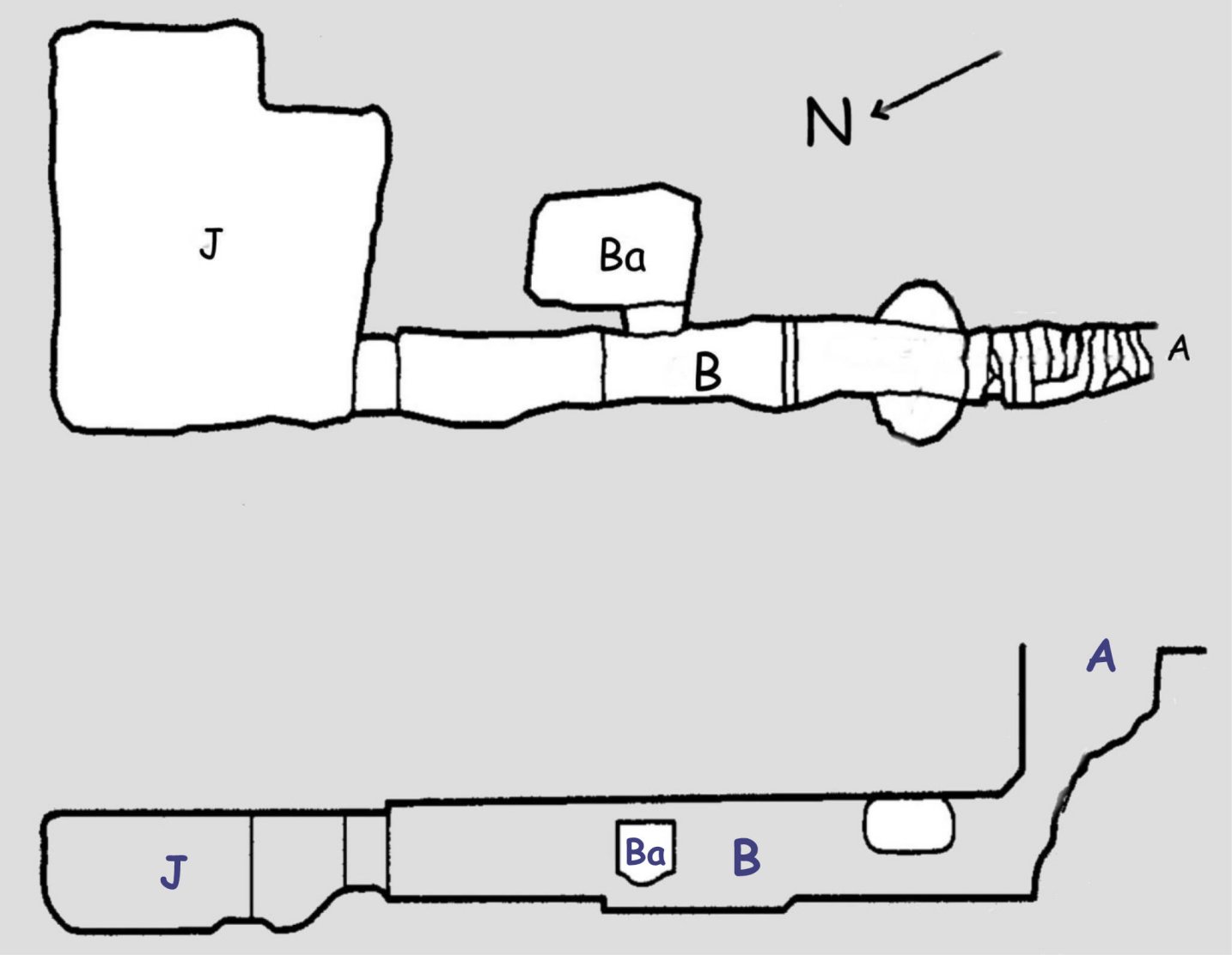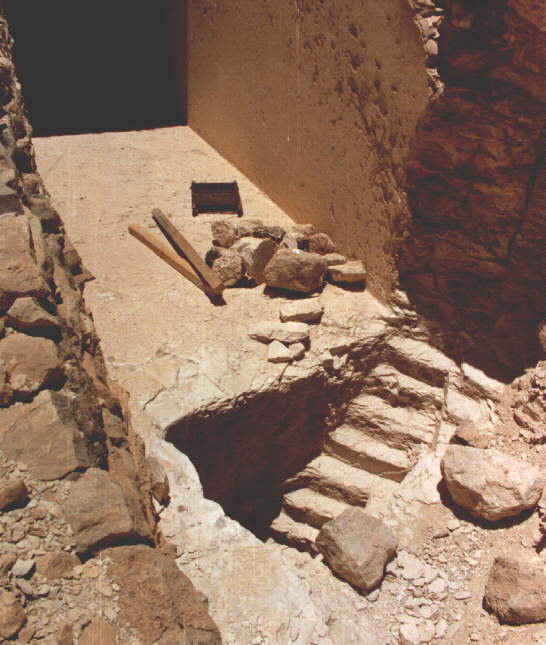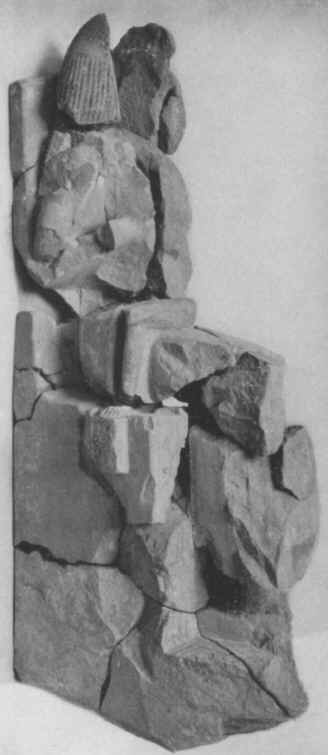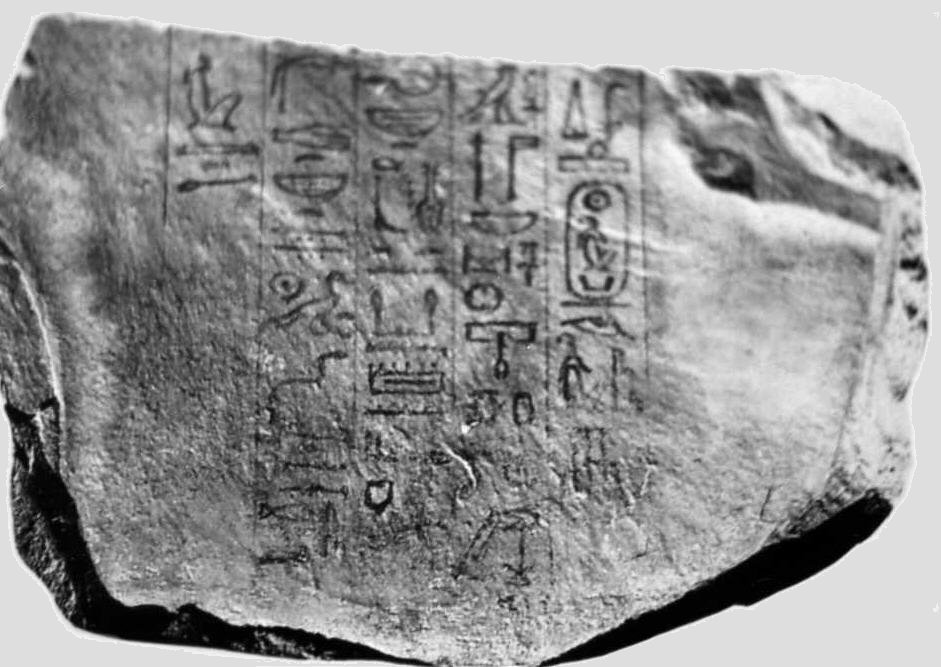 |
Sat-Ra (Sit-Ra) |
last update:
27.12.2010
|
Historical Data
| Name |
Title |
|
Origin |
Tomb |
Sat-Ra (called
In.t)
%At-Ra
|
Great Wet Nurse of the Queen, Lady of the
Two Lands (mna.t wr.t
Sdj.t nb.t-tAwj) |
|
unknown |
KV60 |
| Parents |
|
|
|
|
| Father: |
unknown |
|
|
|
| Mother: |
unknown |
|
|
|
| Brother(s): |
|
|
|
|
| |
none known |
|
|
|
| Sister(s): |
|
|
|
|
| |
none known |
|
|
|

Floor plan and longitudinal view of KV60 which is suggested to be the tomb
of Sat-Ra (Sit-Ra), wet nurse of Hatshepsut. The small tomb is undecorated
and consists of an staircase (A), a corridor (B) with two niches at the
beginning and a side chamber (Ba), and
a roughly-cut burial chamber (J).
Based on the corresponding plan (sheet 68) in the
"Atlas of the Valley of Kings" by Kent Weeks the total length is
about 17 m, Carter noted a length of about 10 m, Ryan mentioned that the length
of the corridor B is 8 meters.
|
KV60 was discovered by Carter in 1903, when he was still working with
Davies. He discovered the tomb when he cleared the entrance to KV19 (Montuhirkhopshef).
Inside the burial chamber Carter discovered some mummified geese, remains
of meat offerings, and the mummies of two elderly woman, one put
into the lower part of an inscribed coffin, the other one was put on the
floor. The inscriptions on the coffin box gave Carter the name and title
of the "Great Royal Wet Nurse" (mna.t wr.t)
named In. This nurse was later identified as the wet-nurse of Hatshepsut, Sat-Ra (Dorman, 1993)
who was already known from other sources. In addition, he found some mummified geese.
Carter was not interested in the tomb, so he removed only the mummified geese and closed it.
His brief report regarding this tomb was published in the Annales du
Service des Antiquités de L'Égypte on the pages 176-177 (Carter, H.,
Report of Work done in Upper Egypt (1902 - 1903), ASAE 4, 1903, p. 171-180).
|
|
A few years later,
in 1906, the tomb was reopened by Ayrton. Most likely Ayrton moved the coffin with the
mummy inside to the museum at Cairo in 1908 but the records of her removal are
missing. The mummy was first registered at the museum in 1916. The 2nd mummy was left lying on the of the tomb
which was closed again by Ayrton.
|
|
In 1989 Donald Ryan
started with the search for the meanwhile forgotten tomb. In a relatively short
he could locate the entrance which is located just in the approach to KV19.
|
| From the location and the floor plan the tomb appears
comparable to other tombs of the 1st half of the 18. Dynasty (for comparison
see: Cliff-tomb of Hatshepsut).
The tomb was cut into the rock at the back of a gully.
|

| Steep steps are leading to the doorway (see photo below taken
from the website of D. P. Ryan). He cleaned the stairway, opened the entrance which was blocked
by large stones and started new investigations. The debris of the pit contained
some small objects including mummy wrappings, faience beads and a copper adze
blade. |
| On each side of the corridor, next to the entrance, there are
roughly cut niches in which Ryan found remains of the funeral equipment (mummy
wrappings, pottery, lamps, etc), among them a wooden face-piece from a coffin
which had been hacked away in antiquity to remove the gold foil.
|
| In addition, the floor of the corridor was littered with
fragments of the burial equipment thus suggesting that the tomb had been
plundered in antiquity and that the destructive work was done mainly in the
corridor. |
| During his investigations
he discovered midway along the corridor the side-chamber (Ba) which had not been mentioned by
Carter or Ayrton. On the sill of the side-chamber lay the unwrapped side of a
beef, inside the chamber the mummified leg. The interior of the chamber was
occupied by a pile of linen wrappings which had once encased the two pieces.
|
| The floor of the burial chamber (about 5.5 x 6.5 meters and
approx. 2 meters high) was covered with the remains of a high-status burial. A
pile of small mummy packages, most likely geese and food offerings, lay across
from the entrance. A large rounded fragment of a coffin rested on another wall
as did a ceramic pot which contained a separate ceramic liner with an
unidentified residue. |
Near the center of the burial chamber, laying on its back directly on the
floor, was the unwrapped well preserved mummy of a female who has been
about 155 cm in length. Her reddish-blond hair lay on the floor directly
next to her now bald head. The right arm lies extended along her body, the
left arm was bent at the elbow to her chest just in the position assumed
to be classic for royal women of the 18. Dynasty. The nails of the
clenched left hand had been painted red and outlined in black.
A rough anatomical examination revealed that the lady had been quite
fat at the end of her life. The teeth were well-worn, indicating that she
was fairly advanced in years.
|
|
Ryan made a wooden box for the unknown lady to protect her mummy against
any damage.
Investigations of this mummy are still pending.
Meanwhile, also this mummy has been moved to the Egyptian Museum, Cairo. |
|
Ryan cleaned the tomb completely
and all objects found were boxed inside the tomb. |
|
Among a lot of small fragments Ryan found 4 seals at different locations
in the tomb, one was blank, two showed the stamp of the royal necropolis
(a seated Anubis above 9 captives), the fourth one showed a kneeling
figure in front of a vulture.
|
| While working on the fragments during the field season 2007 the
head end of a wooden coffin which was completely covered with black resin
attracted the attention of Ryan's team. Beneath a piece of chipped resin a
hieroglyph appeared. Careful cleaning of the head brought to light a wonderful
painting of the goddess Nephthys standing with raised arms on a plaited basket.
Surrounding the figure of the goddess is a funerary inscription, which notes the
name of temple-singer not known before: Ty (Ryan, 2010). |
| Due to the scarcity of inscribed objects dating the tomb is a
problem.
|
| Among the fragments of the pottery found there was -
according to Reeves and Wilkinson (1997) - no piece that could be
dated earlier than the 20. Dynasty. Thus, it is possible that the
tomb had been forgotten and was discovered during the work on KV19. It may have
been opened at that time and used as a storeroom but it may have been also
robbed at that occasion. |
| This is contradicted by a short article presented on the
website of
the Oriental Institute of Chicago. This article reports that during the fall
of 1995 E.F. Wente had been asked by Ryan to examine some inscribed objects
which Ryan had found during his excavations of KV60. Among these was a hieratic
docket on a jar fragment. The inscription indicated that the jar once contained
olive oil donated by the overseer of the granary, Minmose. |
| Since this Minmose is mentioned at the temple of Hatshepsut at
Deir el-Bahari as a participant in the transportation of the obelisks the
docket allows the dating of the tomb to the time of Hatshepsut. |
 |
Little is known about Sat-Ra. Obviously, she had held an important
position at the royal court and while Hatshepsut was growing up, because: |
| - Sat-Ra was the first private person who was given a
tomb in the Valley of Kings (if that is of any importance remains
questionable since the use of the valley as place for royal burials has
been started just a few years ago), |
- furthermore, Hatshepsut made posthumously (?) a "Tutor Type"
statue for Sat-Ra which had probably been erected in the temple area
at Deir el-Bahari (today in Cairo, JdE 56264, sandstone, H. 158 cm, W. 48 cm, D. 63 cm (incomplete); photo:
Winlock, The Museum's Excavation at Thebes, BMMA 27, No. 3, Part 2, 1932).
Fragments of this statue (shown left) had been found by H. E. Winlock (1942) during his excavation at Deir el-Bahari (1911 - 1931) in a cache together
with destroyed statues of Hatshepsut. It showed a seated figure
of Sat-Ra holding a little Hatshepsut. The feet of the little queen are resting
on a small pedestal with the Nine Bows under the soles of the sandals and the
emblem of the united Two Lands in front. Winlock (in: BMMA 27, No. 3, Part 2,
1932, S. 10) assumed that the statue may have been erected in the Chapel of Hathor
or in the so-called Hall of Birth (south wing of the 2nd portico).
|
|
If it is true that the statue had been erected in the Chapel of Hathor
than we have an interesting cultic connection with the Hathor(-cow) which
is several times depicted nursing the queen. Such a posthumous cultic honor
clearly indicates that the
"Nurse/Tutor" played a prominent role in the circle surrounding the
queen.
|
Several parts of the statue show single-spaced vertical inscriptions:
- the right front and the flank of the cubic-shaped seat (left winged)
- the left front and the flank of the cubic-shaped seat (right winged)
- the outer left part of the seat (right winged)
|
|
The museum at Vienna (Porter&Moss, Vol II, p. 371) owns a limestone ostracon, inventory no. 1018, that contains a draft of the complete
text of the statue.
|

|
The inscription (above) is an usual offering text noting the royal donation (by
Maat-ka-Ra) which record title and name of the owner (Sat-Ra).
|
| With the help of the ostracon Winlock (loc. cit.) reconstructed
the text on the statue as: |
| May the King Maat-ka-Ra and Osiris, First of the Westerners, the [Great God] Lord of Abydos,
be gracious and give a mortuary offering [of cakes and beer, beef and fowl and thousand of everything]
good and pure, and the sweet breath of the north wind to the Ka of
[the Chief Nurse who suckled the Mistress of the Two Lands, Sat-Ra, called In, justified].
|
|



